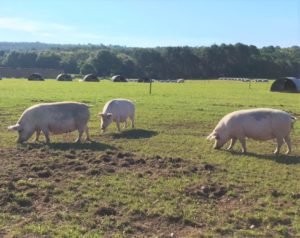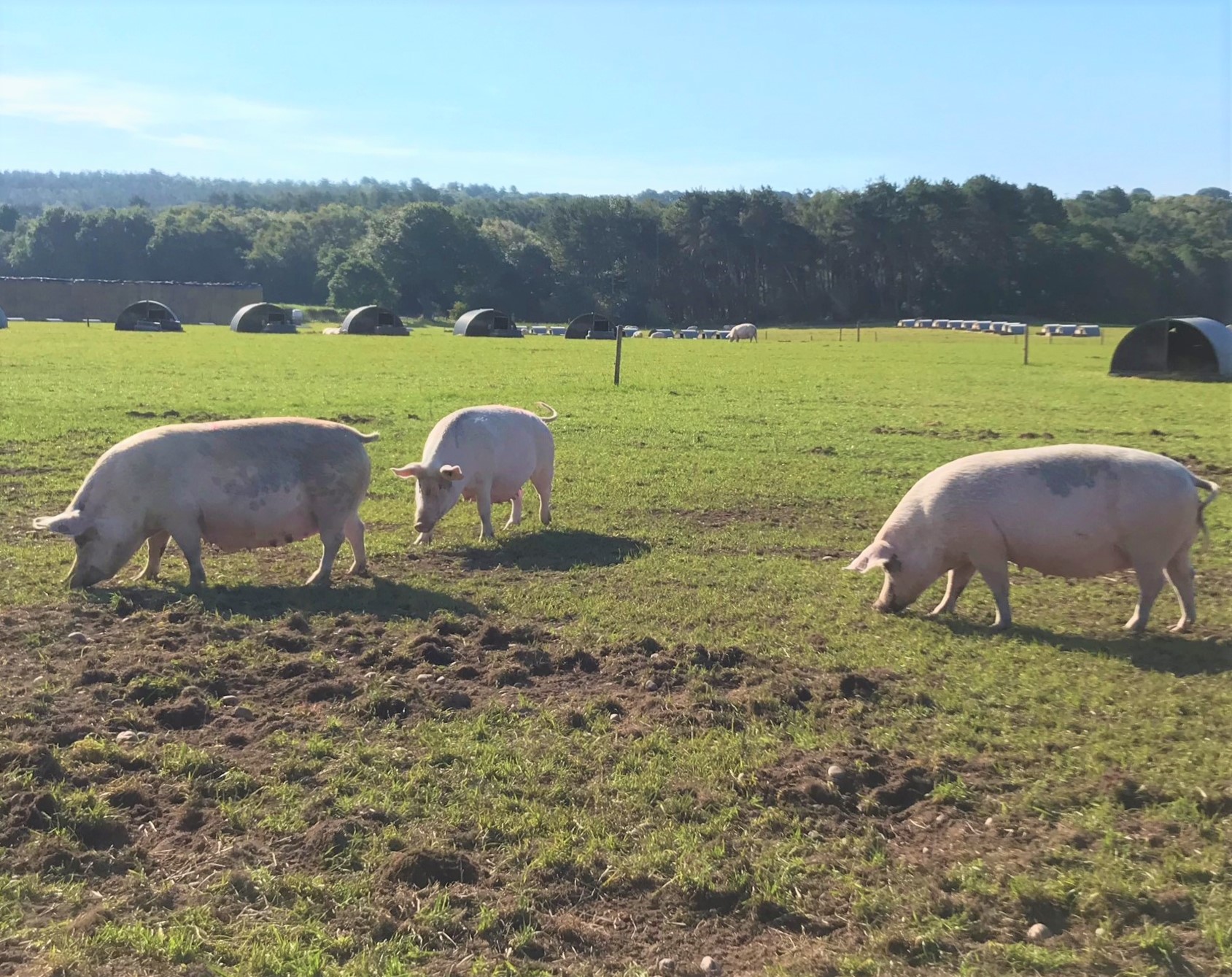The first in a series of producer profiles this month brings you the story of Chris Fogden an outdoor pig producer in East Anglia.
Back in my youth, an entry requirement to agricultural college was that you must work on a farm prior to entry. I ended up on a large arable farm with an indoor pig unit near home in West Suffolk. After a year and a bit of that I set off to Harper Adams having decided that shovelling the proverbial wasn’t where my future lay, vowing not to work with pigs again.
A placement year on a large dairy farm (with cheese making and a pig unit to consume the whey) in North Shropshire instilled in me a keen interest in dairying. I had always wanted to at some point start up my own farming business and appreciated that it wouldn’t be easy but had in my school days already dabbled in a few milking goats, selling raw milk at the gate as well as having a few store lambs that mostly were sold to neighbours in boxes, adding value well before it was on trend.
During my college time I had been fortunate to have a holiday job on a large, traditional estate, which had lots of light land. Despite my previous vow, I still took an interest in the pig sector and often read a column in a magazine written by someone who had what seemed a huge, at 650 sows, outdoor pig unit. It took a while but eventually the penny dropped, that was my way into farming on my own account. Fairly cheap in capital requirement, regular cash flow throughout the year and I knew just the place to rent land from. Dairy farming was out for me due to milk quotas.
So off I went in the autumn of 1987 with my life savings and some borrowings spent on 60 gilts, selling weaners. After about four years numbers were up to 160 sows and I took on my first employee. Over the years I’ve experienced all of the ups and downs that seemed to have regularly hit the pig sector. I now have 1300 sows, still outdoors on the same estate. I still have that first employee and my first customer for my weaners handles my account at Meadow Quality, who I’ve been trading with for about a year, selling 7kg piglets at weaning. The security and promptness of payment was a key factor in starting to trade with MQ.

My pigs slot into part of the arable rotation on the estate, occupying land for two years out of six, usually we’re followed by sugarbeet, then potatoes, followed by onions, maize for biogas or winter barley, than back to pigs. Undoubtedly pig units look better on grass, and it’s better for the soil and the wider environment too, so myself and my landlord are racking our brains as to how to create a slot to establish grass prior to pigs.
Arable farmers are rediscovering the virtues of livestock in helping to improve their soils and I see this as a key opportunity for all livestock sectors in the future.



